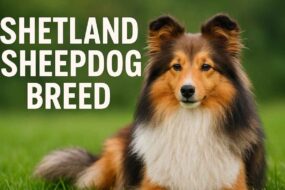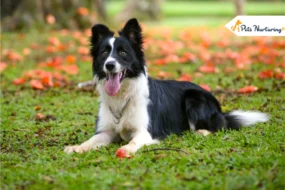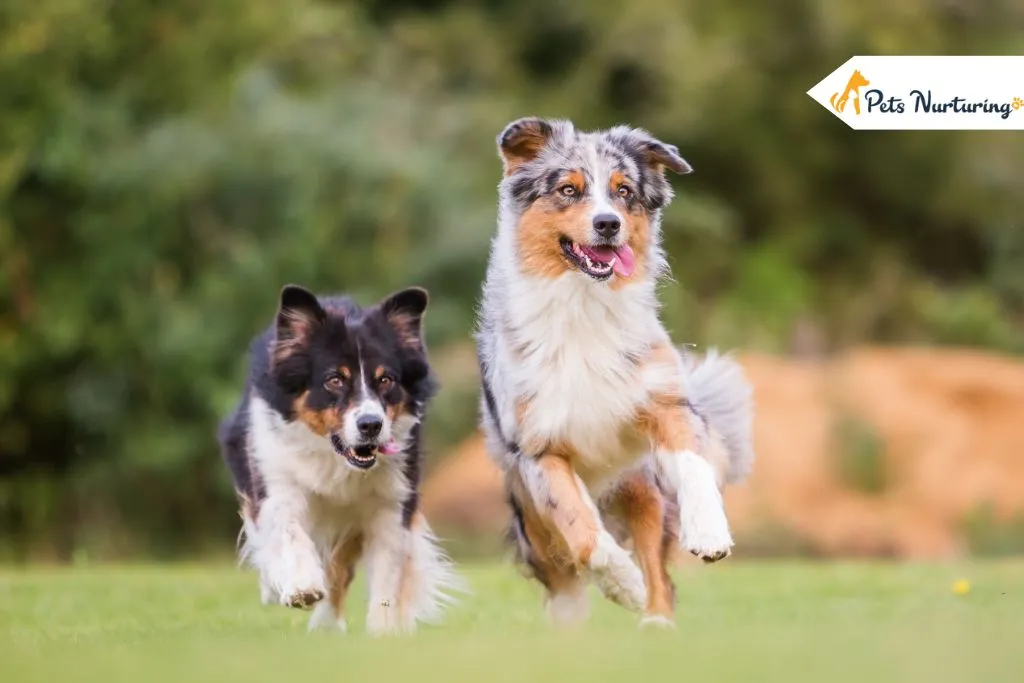
Are you looking for a dog that’s smart, loving and easy to train?
If yes, your search is over because we are going to introduce you to the Australian Shepherd dog breed.
According to the American Kennel Club, Australian Shepherds rank 12th in terms of popularity.
If there is one word to describe this breed, it’s smart, smart, and smart.
Aussie Shepherds are extremely clever and energetic, and you’ll never have a dull moment when you are around them.
While they can be a handful for first-time dog owners, they make wonderful companion dogs.
If you are planning to get this dog breed, continue reading. In this article, we are going to discuss everything about Australian Shepherd dogs, from their origin and care instructions to nutritional and living needs.
Australian Shepherd Dog Breed Overview
Breed Name: Australian Shepherd
Breed Group: Herding Group
Height: 20-23 inches (male)18-21 inches (female)
Weight: 50-65 pounds (male)40-55 pounds (female)
Lifespan: 12 to 15 years
Coat: Medium length double coat
Color: Black, blue merle, red merle, red, and others
Temperament: Intelligent, energetic, loyal, and trainable
Needs for Grooming: Regular brushing, especially during shedding seasons
Hypoallergenic: No
Origin: United States
Australian Shepherd dogs gained popularity from rodeos as they can help herd bulls and perform tricks.
History and Origin of Australian Shepherd

Guessing from the name of the breed, most people assume that Australian Shepherds are originally from Australia, but that’s not true. This dog breed originated in the United States and are descendant of European herding dogs from around the Pyrenees Mountains.
A group of indigenous Basque people traveled to Australia from the Pyrenees Mountains in the 1800s to search for cattle land. The dogs were then cross-bred with Border Collies in a few other breeds in Australia, which eventually led to the origin of Australian Shepherd dogs.
These dogs eventually reached California, where the ranchers named them Australian Shepherds, assuming they were native to Australia. The breed then thrived in the USA and were continuously refined to today what we call Australian Shepherds. These dogs became very popular in the Western US, where they were mostly used as ranch dogs.
As the cowboy culture bloomed in the USA, these dogs found place in rodeos and horse shows. This breed was first recognized by the American Kennel Club in the year 1991 and was officially welcomed by the AKC Herding Group in 1993.
Australian Shepherds have many names – Pastor Dogs, Spanish Shepherds, Bob-Tails, New Mexican Shepherds, Blue Heelers, and California Shepherds.
Australian Shepherd Care
Now that you know about the history and origin of these dogs, let’s learn about how to care for them. These dogs are very energetic and need regular exercise. Also, as they are herding dogs, you need to start training them from a very young age. Apart from that, Australian Shepherds also need regular grooming.
Grooming Needs
The Australian Shepherd is a double-coat dog breed with a short undercoat and a longer outer coat. They mostly shed year-round, so it is important to brush their coat regularly.
It will help you to get rid of extra hair and keep the coat tangle-free. You need to brush their coat at least once or twice every week. During the spring season, they shed more to get rid of the winter coat, so you need to brush more often.
As for bathing, their coat is weather-resistant and doesn’t need much cleaning. You need to bathe them occasionally and use proper dog shampoo to do so. However, make sure you clean their ears regularly to prevent infections. You also need to brush their teeth and trim their nails regularly.
Exercise Needs
Exercise is a necessity for Australian Shepherds as they are high-energy dogs. They need more exercise than regular dog breeds, and if you fail to do so, they will become frustrated, bored and hyperactive.
The thumb rule is to provide them with at least one to two hours of physical as well as mental stimulation. You can take them out for walks and runs, play fetch with them, or register them for agility training. Apart from that, you can buy puzzle toys to keep them entertained.
When you take them out on walks, remember to use a leash, as they can run off to chase smaller animals like squirrels and cats. They might also run after moving objects like bikes and cars. Apart from a leash, you also need solid fencing around your yard, as they can escape pretty easily.
Training Needs
It is very easy to train an Australian Shepherd because they are highly intelligent. They can learn instructions very quickly with consistent training. These dogs are very loyal and obedient and cannot take long when it comes to training.
However, make sure you start training them from a young age during their puppyhood. Proper socialization and exposure to different environments are essential to make them good pets. You can take them to parks and socialize them to behave properly around strangers and other pets.
You can teach them basic commands like sit, stop, stay, stand, etc. Remember that they are herding dogs and are happier when you give them tasks. You can get them involved in dog sports, assistance rescue service or pet therapy to put them to good use and keep them happy.
According to a story, Native Americans used to call Australian Shepherds “ghost eye” because they believed these dogs were special.
Common Health Problems in Australian Shepherds
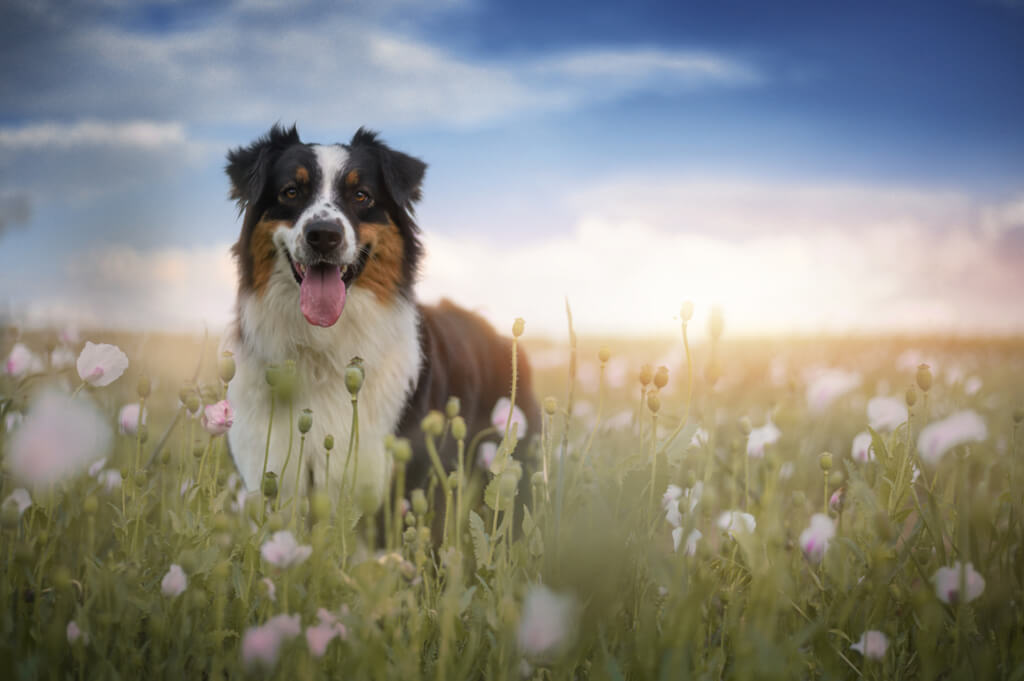
While Australian Shepherds are generally healthy dogs, they can suffer from a few common health problems:
1. Eye Problems
These dogs are prone to certain inheriting eye problems. They can also develop other common eye conditions like:
- Cataracts
- Pannus
- Distichiasis
- Progressive retinal atrophy (PRA)
2. Epilepsy
Australian Shepherds also have a high risk of developing primary epilepsy, which makes them prone to developing seizures. If they inherit this condition, they will need medical assistance throughout their life to keep the seizures under control.
3. Hip Dysplasia
Another common health condition this breed can develop is hip dysplasia. It is an orthopedic problem in which the hip joint doesn’t function properly, thereby leading to mobility issues and pain. It is pretty common in large dog breeds and is often genetic.
The Australian Shepherd is a special kind of dog because it often has two different colored eyes, which is called “heterochromia.”
Australian Shepherd Food and Nutritional Needs
Food and nutrition is important for dogs as it directly affects their health. Overfeeding can lead to problems like obesity and mobility issues, while incorrect feeding can lead to other health problems.
According to experts, an adult Aussie Shepherd should be fed two meals a day for proper nutritional balance. The amount of food will depend on their size, age and activity level. You can consult a vet about the type and amount of food. The instructions are also given on the back of the food package.
Depending on the health and specific needs of your dog, the vet will recommend the right type of food. Puppies will need frequent meals as they are still in the growing phase. You need to feed them 3 to 4 meals a day and reduce the amount as they grow up.
Treats are also important for dogs as they serve as positive reinforcement. You can use treats for training and to appreciate your dog. However, make sure you buy the right type of treat that is safe for your dog. Also, treats shouldn’t make up more than 10% of their daily food intake.
Apart from food and treats, you also need to give them fresh water to stay hydrated. Make sure they always have access to water and clean their water bowl from time to time. During hot weather, give them more water to avoid dehydration.
Aussie dogs have a special thing where one out of every five of them might be born with a short tail, called a bobbed tail.
Australian Shepherd Dog Temperament
| Friendliness | Medium |
| Pet-Friendly | Medium |
| Kid-Friendly | High |
| Affection Level | Medium |
| Playfulness | High |
| Intelligence | High |
| Tendency to Bark | Medium |
| Loyalty | High |
Australian Shepherds are highly energetic and intelligent dogs. They have a strong work ethic and always need a job to stay happy. They are very loyal to their owner and will never leave your side.
These dogs are also highly affectionate and make good family dogs. While they are a bit shy and reserved when it comes to strangers, you can socialize with them to avoid any such behavior.
They love to keep themselves busy and indulge in some form of exercise, like running around the yard. Aussies are very agile and fast and love dog sports. According to AKC, they are one of the smartest dog breeds and can be really challenging for people who don’t have enough time.
As they need to stay busy, you need to dedicate a good amount of time to keep them entertained. They are perfect for ranch and country setups and may not do well in closed apartments. However, they can live happily in a city if you take them for regular walks.
If you have cats, other small dogs or kids at home, remember to train the dog. They can be good family dogs and get along with kids and other pets with proper training. However, beware of their herding instincts, as they can nip and bite your ankle.
Besides herding, Australian Shepherds also work as guide dogs for people who can’t see well, hearing dogs for those who can’t hear well, sniff out drugs, and help find lost people in rescue missions.
Australian Shepherd Living Needs
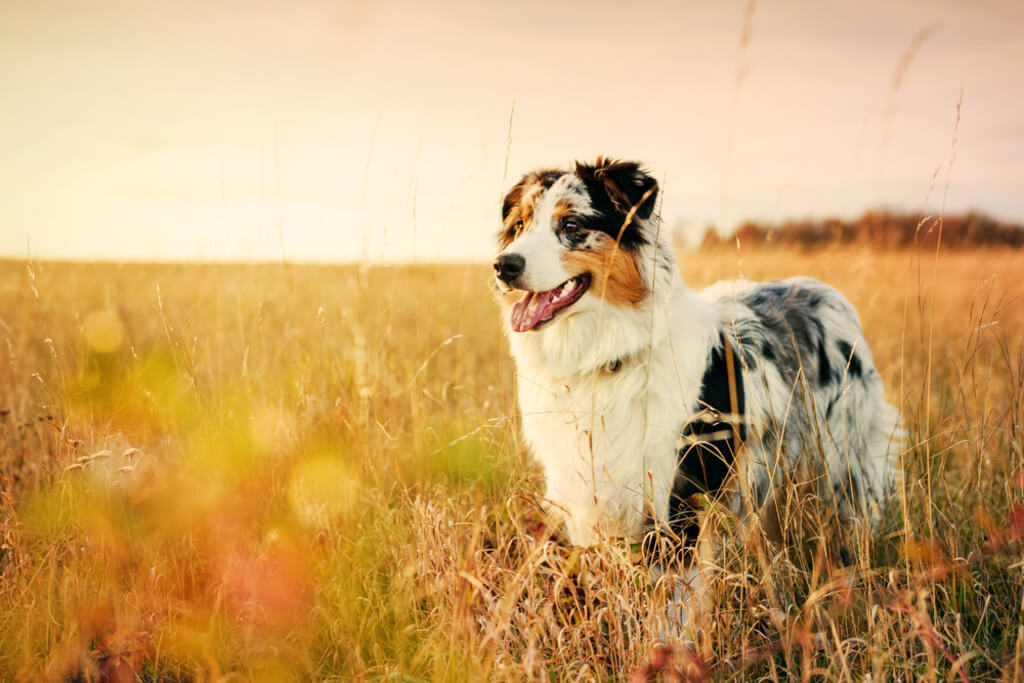
As Australian Shepherds are medium-sized dogs with a lot of energy, you need a good amount of space in your home. The best location for these dogs is an open ranch where they can run and keep themselves busy. If you have a house with an open yard or garden, it is the best setting for an Australian Shepherd.
However, this doesn’t mean that they cannot live in apartments. The dogs are highly adaptable and can live in cities as well. There should be enough space in your home to move around. Apart from that, you need to take them about two to three times a day to provide exercise in parks.
When you first bring an Australian Shepherd home, you need to buy all the necessary items like a food bowl, water ball, collar, leash, food, crate, etc. Apart from that, you need to potty train them from a young age and give them crate training. You also need to take them for regular veterinary check-ups and make sure they are vaccinated.
Moreover, you need to create a safe environment for them in your home. Make sure your yard is properly fenced or else they might escape. You also need to keep the gates closed.
In the 1970s, an Australian Shepherd named Hyper Hank became famous for his incredible flying disc-catching skills.
Conclusion:-
That’s a wrap! This is all you need to know about the Australian Shepherd dog breed. If you are planning to bring this dog home, remember to approach a certified breeder and check their health certificates to make sure there are no genetic health problems. Apart from that, you need to dedicate time and develop a proper routine to train and socialize them. These dogs are great companions, and you will get a friend for life if you offer them proper exercise and training.
According to a story, Native Americans used to call Australian Shepherds “ghost eye” because they believed these dogs were special.
FAQs
What were Australian shepherds bred for?
These dogs were bred for herding livestock, but they can also excel in agility and sports.
Is Australian Shepherd a friendly dog?
Yes, these dogs are known to be typically friendly.
Will Australian shepherds protect you?
Australian Shepherds can be great guard dogs and will protect you.
Can Australian shepherds be left alone?
You can leave them alone at home for 4 to 6 hours with proper crate training.
Explore Further:-








